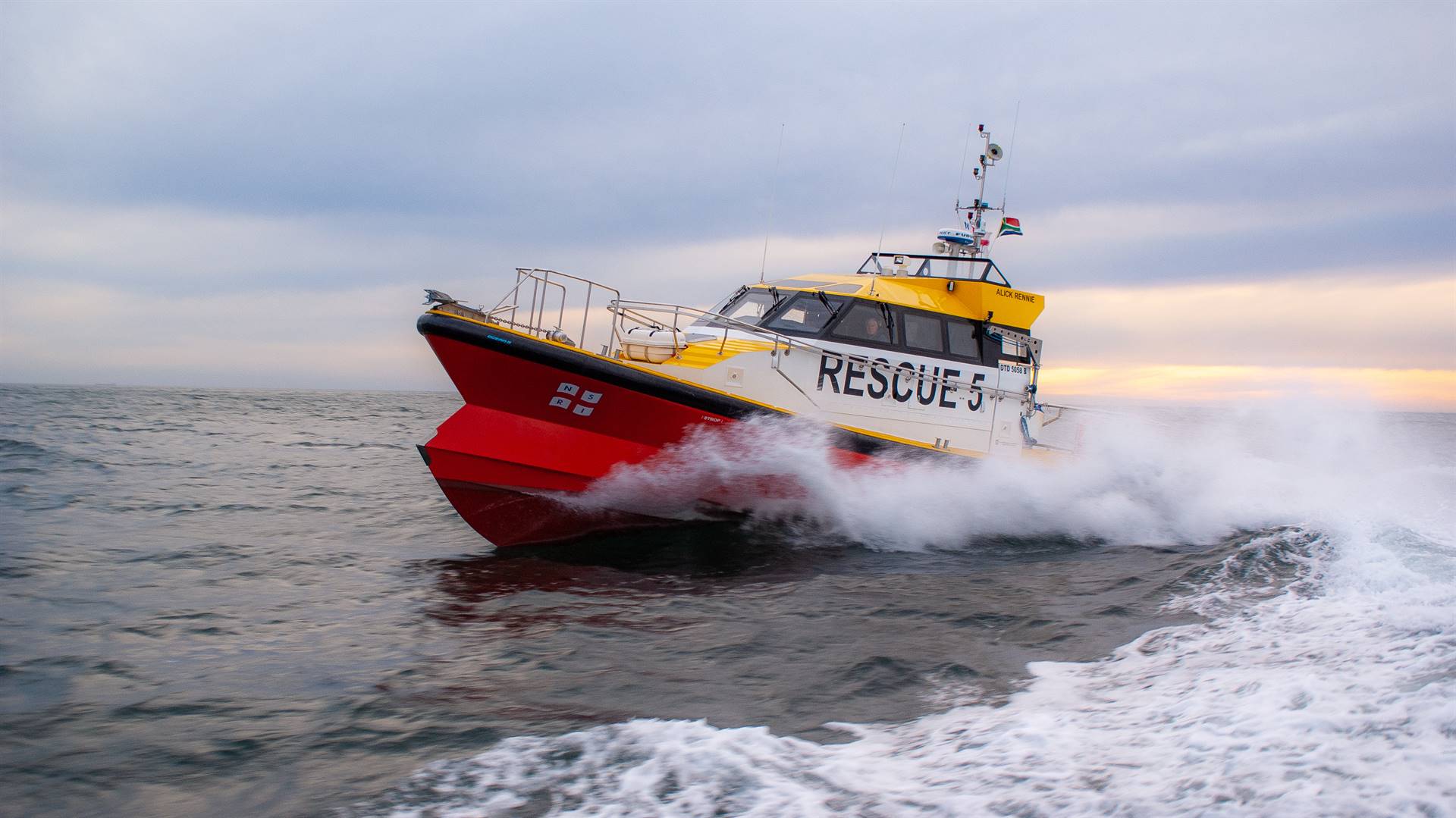(images: Simon McDonnell)
Since 1967, South Africa’s volunteer-run National Sea Rescue Institute (NSRI) has been saving lives in both its coastal and inland waters, operating from base stations along the SA coastline and on inland dams, 24/7. In addition to this superb work, the charity is proactive in educating the public – and especially schoolchildren – about water safety and drowning prevention. NSRI figures indicate that there are approximately 1,484 drownings in SA each year, with 29% of these fatalities involving children under 14 years of age.
In the past seven years, however, the NSRI became aware that its fleet of Class 1 offshore rescue craft (ORCs), comprising 10m and 12m models built predominantly in the 1980s, were approaching retirement – thus necessitating an overhaul, for the safety of its volunteer crews and the survivors they assist. So, Mark Hughes, NSRI executive director of capital projects, pushed forward a programme to phase in a new series of ORCs.
Although crew and survivor safety is paramount, there is another advantage to the upgrade. “Although most rescues are coastal and inshore, an increasing number of these operations require search and rescue [SAR] vessels with advanced capability in technology, and the ability to safely increase the endurance of the crew further out to sea,” the NSRI tells Ship & Boat International. The resultant new ORCs would therefore be required to undertake deep-sea SAR missions and to handle medical evacuations and mass rescue incidents.
After four years of looking for a suitable vessel, Hughes came across the 14m SAR ORC in France, designed by Pantocarene and constructed by Bernard Shipyards. The NSRI then ordered nine of these vessel types: the first to be constructed entirely in France; the second to be built as a hull, deck and bulkheads in France, but to be completed in SA; and the third and fourth hulls to be entirely constructed in Cape Town by builder Two Oceans Marine Manufacturing. Founded in 1989, Two Oceans Marine specialises in custom and semi-custom power and sailing catamarans sized between 8-45m, in addition to customised commercial cats, including patrol boats and research vessels for various organisations and oil & gas corporations across Africa. “We build composite vessels, using e-glass and carbon, rather than steel or aluminium newbuilds,” the company explains. Supported by a strong workforce of 420 persons, the builder presides over 13,000m2 of covered factory floor space.
With production of the 14m SAR ORCs now relocated to Cape Town, tweaks were made to the 14m SAR ORC at the NSRI’s request. The changes included: the addition of a flybridge; the creation of a suspended wheelhouse, on a polymer mounting, to reduce noise levels within the wheelhouse to 76dB; and replacement of the ORC’s tender, creating more aft deck space. “The original design has a tender on the aft deck, that launched on the transom,” the builder says. “The NSRI replaced this with a big aft deck to load/offload and work on patients/survivors, and for helicopters to be able to pick up and drop off survivors.” The aft deck area will also provide a space from which NSRI personnel can launch drones or additional life rafts, and the vessel has a bollard pull of 4.5tonnes, enabling it to tow distressed small craft out of harm’s way.
Compared to their ’80s-built predecessors, the new models offer far superior onboard tech, including FLIR cameras and updated navcomms equipment. The newbuilds also excel in terms of architecture. “The new ORCs are planning-hull vessels, and also self-righting,” Two Oceans Marine explains. “They can handle much rougher sea states than the old fleet. The new ORCs can be deployed as far as 50nm from land and can easily handle force 6-8 seas: in fact, Hull 3’s delivery trip around Cape Point took place in force 6-8 seas, and she handled beautifully.”
Also, whereas the NSRI’s outgoing ORCs could accommodate six crew and 10 survivors, the newbuilds can carry around six to eight crew and 24-30 survivors. “The new ORCS are significantly more fuel-efficient, and have a range of around 250nm at 20knots, versus the old ORC fleet’s range of 140nm at 14knots,” Two Oceans Marine says. Other refinements include shock-mitigating seats, supplied by ISRI, and more spacious engine rooms, permitting the crew to walk around them unimpeded when conducting maintenance and checks.
The first two vessels in the new series, Alick Rennie and Donna Nicholas, were delivered to the NSRI’s Rescue Stations 5 (Durban) and 10 (False Bay) respectively in March 2019, while Hull 3, The Legacy, was delivered to Rescue Station 17, in Hermanus, in January this year. “Hull 4 is scheduled to be completed by July 2022, and we hope to complete the build programme by 2030,” Two Oceans Marine says, adding that there may be the possibility of a 10th vessel order. Either way, the NSRI will be well equipped to take on its arduous but crucial task, up against the worst that the wind and waves can throw at them.
TECHNICAL PARTICULARS
14m SAR ORC class (customised for the NSRI)
| Length, oa | 14.8m |
| Breadth, oa | 4.8m |
| Depth | 2.08m |
| Draught | 1.4m |
| Displacement (lightship) | 17tonnes |
| Engines | 2 x Cummins QSC 8.3M |
| Output of each engine | 441kW |
| Max speed | 28knots+ |
| Fuel capacity | 2,000litres |
| Crew | 6-8 |
| Survivors | 30 |






